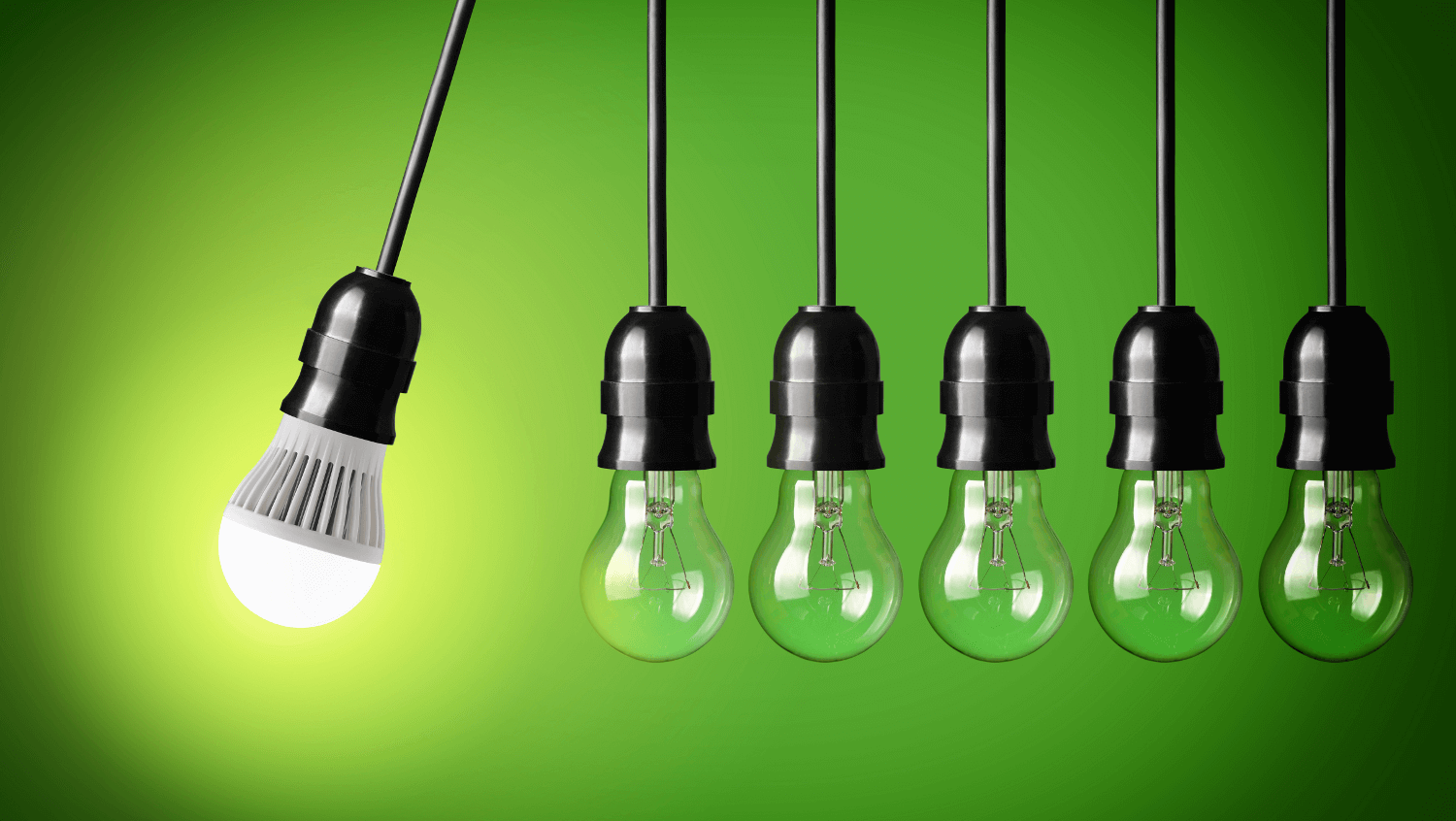LED, (light emitting diode), lighting has been recognized as a high efficiency, long lasting light source with incredible visual impact. Initially associated with electronic gadgets, circuit boards, and flashlights, LED solid state lighting technology has been applied to the commercial lighting industry with some very promising results.

Because of LED lighting’s visual impact, high-efficiency performance and long-lasting attributes, LED lighting has successfully replaced conventional lighting technology in several commercial lighting applications with significant savings in energy costs.
These commercial LED lighting applications, include:
• LAX Gateway at Los Angeles International Airport have replaced metal halide with an LED system, where they anticipate 75% less energy consumption, but demonstrate a dramatic visual effect, (as shown on left.)

• Hard Rock Hotel & Casino in Las Vegas replaced metal halide with an LED system, cutting annual energy costs from $18,000 to $1,900.
• The British Airways London Eye replaced fluorescent with an LED system, eliminating former maintenance costs and requirements while gaining the ability to produce color light and programmable effects, (shown here on right.)
• Bostonian shoe stores in the US replaced fluorescent with an LED system, mitigating the need for frequent and costly lamp replacement, while also gaining the ability to easily adjust from “warm” to “cool” white light in its display shelves.
LED lighting clearly offers an eco-friendly alternative to energy-wasting conventional lighting. Because of this efficiency it is predicted that in the next 20 years LED lighting will replace almost all of conventional commercial lighting systems .
The advantages of LED solid state lighting technology continue to prevail:
• LEDs produce more light per watt than incandescent bulbs; this is useful in battery powered or energy-saving devices. LEDs can emit light of an intended color without the use of color filters that traditional lighting methods require. The color of the light simply depends on the composition and condition of the semiconducting material used, and can be infrared, visible, or ultraviolet. This is a much more efficient method to produce color lighting effects and can lower initial costs.
• The solid package of the LED can be designed to focus its light. Incandescent and fluorescent sources often require an external reflector to collect light and direct it in a usable manner.
• When used in applications where dimming is required, LEDs do not change their color tint as the current passing through them is lowered, unlike incandescent lamps, which turn yellow.
• LEDs are ideal for use in applications that are subject to frequent on-off cycling, unlike fluorescent lamps that burn out more quickly when cycled frequently, or HID lamps that require a long time before restarting.
• LEDs, being solid state components, are difficult to damage with external shock. Fluorescent and incandescent bulbs are easily broken if dropped on the ground.
• LEDs can have a relatively long useful life. One report estimates 35,000 to 50,000 hours of useful life, though time to complete failure may be longer. Fluorescent tubes typically are rated at about 30,000 hours, and incandescent light bulbs at 1,000–2,000 hours.
• LEDs mostly fail by dimming over time, rather than the abrupt burn-out of incandescent bulbs.
• LEDs light up very quickly. A typical red indicator LED will achieve full brightness in microseconds; Philips Lumileds technical datasheet DS23 for the Luxeon Star states “less than 100ns.” LEDs used in communications devices can have even faster response times.
• LEDs can be very small and are easily populated onto printed circuit boards.
• LEDs do not contain mercury, unlike compact fluorescent lamps.
